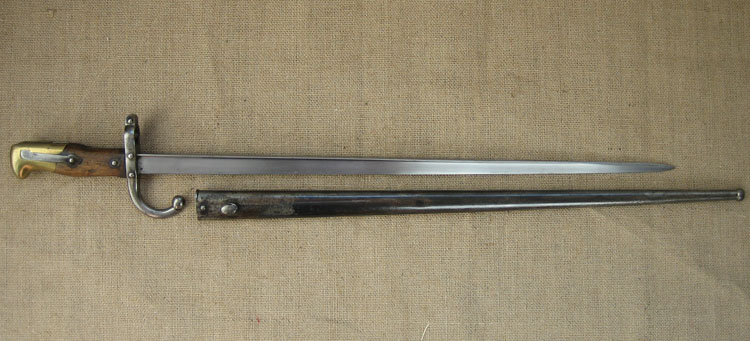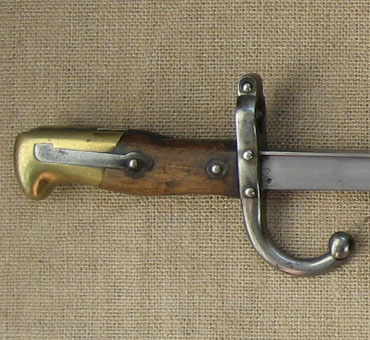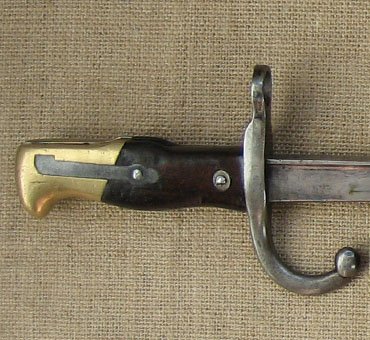
| Mle. 1874 "Gras"
Technical data : Total length : 642 mm Was used on : Mle. 1874 "Gras"
General information : After its defeat in the Franco-Prussian War (1870-1871) the French did an attempt to modernize the equipment of its army. They replaced the Mle. 1866 “Chassepot” rifle by the newly designed Mle. 1874 “Gras” bayonet and rifle.The official Mle. 1874’s service period, from 1874 to the adoption of the Mle. 1886 in 1886, was one during which the French army was not involved in any major conflict. The bayonet has served in several colonial wars though and has definitely earned its place in French bayonet history. During the First World War, the French equipped some of their troops behind the front with Mle. 1866 and Mle. 1874 to free up more modern rifles for frontline troops. The bayonet can be recognised by the typical hump back handle made of wooden grips and a brass pommel with leaf spring. The long blade is T-shaped and bears inscriptions that, just like on the Mle. 1866, refer to the time of production and the place where the bayonet was manufactured. There is absolutely no link to any Major or other officer, nor was it ever presented to Lieutenant Châttelerault, St.-Etienne or Tulle. They are the names of the places where the French factories called “manufactures” were located. The system used for the dates is a little peculiar. For the names of most months their French name was used but some were a combination of ciphers and letters. This relates to the Julian calendar, the predecessor of our current Gregorian calendar, where the new year started on the 1st of March. The list is Janvier (January), Février (February), Mars (March), Avril (April), Mai (May), Juin (June), Juillet (July), Aôut (August), 7bre (read as “septembre”, September), 8bre (read as “octobre”, October), 9bre (read as “novembre”, November) and Xbre (read as “décembre”, December). There exist Greek (M1874 Gras) and Chilean (M1885 Kropatschek) variations of the Mle. 1874. They can be recognised by the differences in the shape of the handle and he muzzle ring. Known makers : Manufacture Impériale de Chatelleraut Images.
© www.bajonet.be |
||||||||||||||||||||||||||||||


